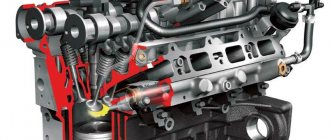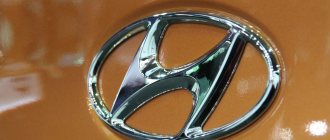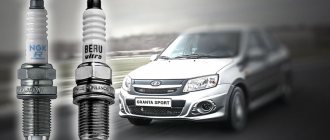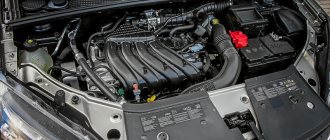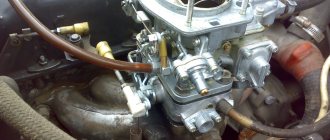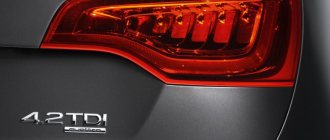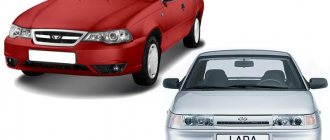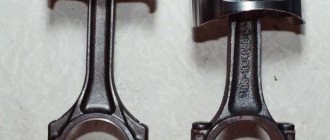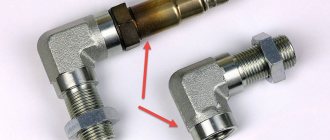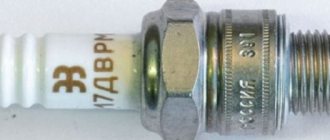Dear friends, today we will learn a lot of interesting things about the injection of the power system. So: distributed fuel injection or direct? Which is better and how are they different?
Let's say the time has come for you to make your dream come true and you have seriously taken up choosing a car. This is a serious matter, and if choosing the color and shape of a car is quite easy, then choosing the type of motor may cause difficulties, especially for people who are not technically trained.
If so, then you should definitely read this article carefully.
Distributed fuel injection: economical and environmentally friendly
It is no secret that distributed fuel injection (injection) is a modern technology closely related to complex electronics. Its main feature is the presence of an individual injector for each cylinder of a gasoline engine.
But, in fact, similar systems, albeit with mechanical control, appeared at the end of the 19th and beginning of the 20th centuries. They were used in aviation, in racing cars, and sometimes their interpretations even entered the mass automobile market.
Distributed injection experienced a real boom with the advent of affordable microprocessors in the late 80s and is respected by vehicle manufacturers to this day.
Let's move on to the operating principle and types of distributed injection system (by the way, it is also called a multipoint system ).
As we have already mentioned, the key feature of this technology is the fuel injectors, which are installed one at a time in front of the intake valves of each engine cylinder .
Thus, unlike single injection, it is possible to achieve uniform distribution of the fuel-air mixture among the cylinders, as well as its precise dosage.
In general, this nozzle arrangement allowed engineers to significantly improve the environmental friendliness of the engines, as well as make them less voracious. This entire ensemble is controlled by an electronic control unit (ECU).
Using numerous sensors that transmit data on temperature, gas pedal position, amount of incoming air and other parameters, it calculates the optimal volume of gasoline for injection and at the right moment sends a control signal to open the injectors.
Dismantling gas equipment: procedure
We are sure, car service services
To dismantle the HBO you will definitely need. The procedure for dismantling the gas equipment:
- bleeding gas from lines, reducers, cylinders;
- disconnecting the lines from the cylinder, removing the cylinder fasteners to the car frame, dismantling the cylinder with a multivalve and the filling hose. The hole for the neck can be closed with a plug;
- disconnecting the line from the gearbox, carefully removing them from the luggage compartment;
- dismantling the gearbox, electronic control unit, sensors, antifreeze hoses. Replacing the cooling system pipes, since the tee at the insertion point cannot be plugged;
- removing the injectors and plugging the holes for the injectors in the intake manifold.
This is a general procedure for completely dismantling the gas equipment, but we recommend going to a Kharkov car service center
, where they will either convince you that it is better to leave the equipment, or replace it with a new one, or simply disconnect the lines and turn off the equipment components.
Suddenly you decide to return to HBO again. On average, dismantling a 2nd generation LPG
takes literally 2-3 hours,
dismantling a 4th generation LPG
takes a maximum of 4 hours.
There are cases when the installer accommodates the client and removes the equipment free of charge provided that a new gas equipment is installed, but usually the cost of dismantling the gas equipment
is about a third of the cost of installation work.
By installing Italian PRIDE by AEB systems, you can be sure that you will have to remove the LPG only when it has completely exhausted its service life or becomes obsolete. These kits solve the problem of high gas consumption of LPG
(+5-7% to gasoline consumption is the maximum for this equipment), the problem of exceeding the temperature in the cylinders is eliminated. These are cost-effective kits that are provided with all the necessary functionality.
The best service station for installing gas on a car
PRIDE by AEB - KOSTA GAS. After all, this is not only the official representative of AEB in Ukraine, but also a service for the repair and maintenance of gas equipment
where real professionals work. Come see for yourself!
Gas cylinder equipment (hereinafter referred to as LPG) is installed on cars in specialized centers for a fee. Dismantling gas equipment costs less than installation and takes much less time. Disposal of equipment can be complete or partial. In the event of a complete shutdown, rework will be required to restore full liquid fuel supply to the car's power system.
LPG equipment is installed to save on fuel, since the price of gas is lower than the price of gasoline. After installation, it can be fully assessed only after some time - after a period of test operation. Based on the experience of other drivers, the main advantages and disadvantages of such equipment are highlighted. Pros:
- costs much less than other alternative fuel options;
- saving fuel used;
- possibility of parallel use of gas and gasoline;
- the engine runs longer without the need for maintenance;
- exhaust gases pollute the environment much less;
- the modern LPG system is easy to operate;
- A gas leak is not as dangerous as a gasoline leak.
There are also disadvantages, and there are quite a lot of them:
- The power of the car decreases, this is especially noticeable during acceleration;
- installation of non-staff equipment is required at your own expense;
- regular paid equipment maintenance;
- Starting in winter is carried out on gasoline;
- deprivation of free space in the trunk of a car;
- increase in vehicle weight;
- difficulties in servicing the gasoline system;
- ban on stopping in underground parking lots;
- HBO can only be installed in licensed centers;
- changes in the design of the car must be registered;
- not everyone wants to buy a car with such a system;
- There are much fewer gas filling stations than gasoline ones.
It is impossible to say for sure whether it is worth using gas as a type of fuel or remaining committed to the standard system. The decision must be made based on the functionality of the car and where it is most frequently used - occasional trips around the city or frequent long-distance trips on the highway.
Fuel injection timing
By the way, about the opening time of the injectors. It’s not all that simple, and distributed injection systems differ depending on the order in which these elements are activated. There are the following injection options:
- simultaneous;
- pairwise parallel;
- phased.
Simultaneous
With simultaneous injection of gasoline, all injectors open at the same time, and this happens during one full engine operating cycle (two revolutions of the crankshaft). I don’t think this is a smart move and I don’t understand why there is extra fuel consumption.
Apparently this was practiced at the dawn of the invention of this method, when they were not very concerned about the environment and gasoline was cheap.
Pair-parallel
When opening in pairs, the process is divided in such a way that at one point in time, only two injectors are injecting and only those cylinders that enter the intake and exhaust strokes.
Here, too, there is an extra injection, why is it needed in the exhaust stroke. They say this helps when starting the engine in emergency mode. Well, at least one time, that’s good.
Phased
But the most modern of the listed three is the phased algorithm of operation of the distributed fuel injection system and is used in modern cars. It involves turning on each injector immediately before the intake stroke of its corresponding cylinder. This is of course reasonable and correct.
The main thing in this injection is that the injector injects the fuel mixture into the intake manifold at the inlet of the cylinder, directly onto the intake valve. Injection is performed on the INTAKE stroke.
Checking multi-point injection
A violation of the gasoline supply circuit occurs due to the failure of one of the elements. Here are the symptoms that can be used to recognize a malfunction of the injection system:
- The engine starts with great difficulty. In more critical situations, the engine does not start at all.
- Unstable operation of the power unit, especially at idle.
It is worth paying attention to the fact that these “symptoms” are not characteristic exclusively of the injector. Similar problems occur in the event of problems with the ignition system. Computer diagnostics usually helps in such situations. This procedure allows you to quickly identify the source of failure that is causing multipoint injection to be ineffective.
In most cases, the specialist simply resets errors that prevent the control unit from correctly adjusting the operation of the power unit. If computer diagnostics show a breakdown or incorrect operation of the spray mechanisms, then before you begin searching for the failed element, it is necessary to eliminate the high pressure in the line. To do this, simply disconnect the negative terminal of the battery and loosen the fastening nut in the line.
There is another way to reduce the pressure in the main line. To do this, disconnect the fuel pump fuse. Then the engine starts and runs until it stalls. In this case, the unit itself will generate the pressure of the fuel located in the ramp. At the end of the procedure, the fuse is installed in its place.
The system itself is checked in the following sequence:
- A visual inspection of the electrical wiring is carried out to see if there is oxidation on the contacts or damage to the cable insulation. Due to such malfunctions, power may not be supplied to the actuators, and the system either stops working or becomes unstable.
- The condition of the air filter plays an important role in the operation of the fuel system, so it is important to check it.
- Spark plugs are checked. By the deposits on their electrodes, you can recognize hidden problems (read about this in detail separately) of the systems on which the operation of the power unit depends.
- The compression in the cylinders is checked. Even if the fuel system is working properly, with low compression the engine will be less dynamic. There is a separate review on how this parameter is checked.
- In parallel with vehicle diagnostics, you need to check the ignition, namely, whether the OZ is set correctly.
After the problems with the injection have been corrected, it needs to be adjusted. Here's how the procedure is performed.
What is the difference between distributed fuel injection and direct fuel injection?
Here's the thing. As mentioned above, with distributed injection, the mixture enters the manifold in the area of the intake valve. And with direct injection, directly into the combustion chamber, bypassing the intake manifold.
Direct injection
Direct injection is more accurate and the supply pressure of the fuel mixture is higher than that of port injection. This principle is more economical (up to 20% fuel savings). more environmentally friendly (fuel burns better). But still, this type of system is not without its shortcomings and the designers went further.
But what came out of this, and what technologies appeared as a result, in the TFSI combined fuel injection system.
//www.youtube.com/watch?v=lW7UOR68poQ
See you on the blog pages!
Tags engine
What's better - a table?
I suggest you think about it, I’ve compiled a table on the advantages of both types
| Distributed ( MPI ) pros : | Direct ( GDI ) advantages : |
| Cheap | More powerful (about 5%) |
| Simple | Less consumption (up to 10%) |
| Work longer without cleaning | More environmentally friendly |
| Not demanding on fuel quality | |
| Simpler injector design |
As you can see, both types have significant advantages over the other, apparently both still exist.
Now we are watching the video version.
Now let's vote, what do YOU think is better - MPI (distributed) or GDI (direct)?
This is where I end, I think my article and video were useful to you. Read our AUTOBLOG, subscribe to updates.
Similar news
- Engine oil pressure. Which should it be? Let's take it apart and move...
- How many filters are there in a car? What are they? I am listing for...
- Timing chain resource. We will also touch on Volkswagen products. Everything is ambiguous...
Add a comment Cancel reply
Another classification option
The system can be of several types and options.
- A simultaneous combination is rare from a practical point of view. During one revolution, all the nozzles in it fire in simultaneous order.
- Parallel operation (in pairs) - during one revolution of the shaft, the injectors fire in pairs, once per revolution.
- Phased, sequential - when each of the nozzles is separately regulated during one rotation of the shaft. In this case, the element is opened once before the intake.
Regardless of the classification option, all mechanisms have differences in a number of parameters taken into account during operation.
Prospects
A characteristic feature of recent times has been the downsizing of automobile engines. This is a reduction in the working volume, dimensions and weight of the power plant. At the same time, no one began to refuse power and dynamic indicators; moreover, cars, due to safety requirements and saturation with comfort systems, became noticeably heavier. The power must be further increased.
At the same time, environmental standards are being tightened. If previously they were provided through the consumption of excess gasoline, otherwise it would have been difficult to reduce the percentage of harmful substances, now restrictions on the total emission of carbon dioxide have been introduced. But it is impossible to fight this substance; it is an essential and significant part of exhaust gases. You can only increase engine efficiency and reduce displacement.
Combustion under such conditions in all modes can be precisely controlled only by a system of combined MPI-GDI injection with supercharging from a turbine. This is how the most modern gasoline engines are built. So far, the only cleaner vehicles are electric vehicles or hybrids with different thermal cycles in the internal combustion engine.
Device
The system as a whole consists of main components.
- The fuel tank is a compact element that has a pump and a filter for cleaning mechanical particles. It is designed to store fuel.
- The injector is used to form a mixture - an emulsion, as well as to supply it to the cylinders.
- Control unit - it is installed directly on engines with an injector.
- Fuel pump - the traditional version is usually used. It is represented by an electric motor with high power.
Thus, the mechanism in question is simple and progressive, allowing you to achieve the desired results when using it and ride comfortably.
Let's sum it up
A more correct name for this technology is distributed injection . Because the fuel is distributed between each cylinder of the engine. Multipoint injection is injection into many points of the same volume, and this is no longer entirely true.
MPI technology has proven itself well. As many car enthusiasts did not protest after replacing the carburetor and single injection with it, it brought relief to car owners.
- There is no longer a need to constantly intervene and regulate the creation of the air-fuel mixture.
- It has become more reliable compared to its predecessors.
- Fuel consumption has decreased.
- Engine characteristics have improved: they have become more responsive and economical.
- There is no need for seasonal cleaning and adjustment of the carburetor, its tuning and revision after bad fuel - the computer configures everything itself.
- The driver forgot what a “choke handle” is, especially during a cold start of the engine.
The basic operating principle of the MPI system
The designation MPI stands for Multi-point injection, which means “multipoint injection”. This marking is most often found on European cars.
Multipoint injection system design
It consists of the following elements:
- throttle valve;
- distribution line or fuel rail;
- electromagnetic injectors (injectors);
- mass air flow sensor or air pressure and temperature sensor;
- fuel pressure control.
Distributed injection scheme
In such a power supply system, air from the atmosphere passes through the air filter, mass air flow sensor and then through the throttle valve into the intake manifold. It is then distributed through the cylinder channels.
In turn, fuel is supplied by a pump through the fuel filter and ramp to the injectors. The latter are located near the intake valves of the cylinders, which reduces fuel losses and the likelihood of fuel settling in the intake manifold. The operation of the injectors is controlled by the engine ECU. The control unit calculates the amount of fuel that should flow through the injectors based on information about the modes, load and engine speed, as well as on information about the amount of air entering the system received from a whole set of sensors (temperature, pressure). In accordance with the calculations, the ECU sends pulse signals to the electromagnetic injectors, causing them to operate.
In addition to controlling the operating modes of the injectors, the control unit regularly diagnoses the state of the injection system and, if faults are detected, issues a corresponding error signal on the dashboard (“Check Engine”).
MPI operating modes
Depending on the operating mode of the injectors, several types of systems are distinguished:
- Simultaneous injection. In such a system, all injectors open simultaneously, supplying fuel to each cylinder. This scheme is an improved mono-injection, since the ECU controls the process of opening and closing all injectors as if it were opening one. On the other hand, the amount of fuel supplied to each individual cylinder may be different.
- Pair injection. The opening of the electromagnetic injectors occurs in pairs, but one operates during the intake stroke, and the second at the moment of exhaust gas release. Currently, this scheme is used only at the stage of starting the engine or in emergency mode.
- Individual injection. This is the most commonly used design, in which each injector is fired individually on the intake stroke. To ensure their operation, the system is equipped with a valve timing sensor. It is installed on the camshaft and determines the firing time of each injector depending on the position of the shaft. Fuel is injected into each cylinder once per engine operating cycle. Classic injector operating sequence: 1-3-4-2
Reasons for switching from carburetors to injection
The operation of a carburetor resembles a simple spray gun. The air flow passes through the diffuser, creating a vacuum that draws fuel from the atomizer through the nozzles. Dosing leaves much to be desired, so the latest carburetors became so complex that the dead end of this path became clear.
Technically, it is easier to prepare the required amount of fuel and then inject it under pressure into the same air flow. Dosing here also created quite a few problems, but it was clear that their solution and simplification was only a matter of time. And the emergence of increasingly stringent requirements to reduce exhaust toxicity and fuel economy forced us to move in precisely the promising direction.
